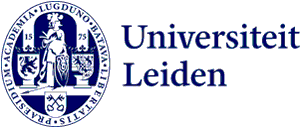
From child to artist: something for everyone during Days of Arts and Science
From 11 to 17 September, Leiden will be all about art and science. What can the combination of these two domains do for us? And how can cooperation between them be strengthened? Several public events and a brand new symposium for specialists should answer these questions.
'We started several years ago bringing artists and scientists together at the Brave New World Conference,' says Artificial Intelligence Innovation Manager Alexander Mouret, one of the initiators of Days of Arts and Science. 'There they discuss the future of the world with each other. This year, for example, the theme is "Future of attention". That works very well, but we were still missing something that was not so much aimed at a broad audience, but really focused on creators.
Beyond the Canvas
That became the Beyond the Canvas symposium. 'We're going to focus on the question of what art is, what science is, and what the combination of the two means. If you ask people now what 'ArtScience' is, everyone comes up with a different definition. I find it very interesting to highlight all these different perspectives.'
The symposium will therefore feature roughly three groups: scientists who are involved in art and science, the artists themselves, and people who work at cultural institutions, such as museum curators. Mouret: ‘We can think about what ArtScience is, but ultimately artists have to be able to show it somewhere. Currently, these kinds of projects often fall between the cracks in grant applications, for example, because it isn’t entirely science, but nor is it entirely art either.'
And that while the combination of science and art regularly leads to interesting results. 'A few years ago, artists told Brave New World that they were developing an artificial womb. People thought that was an interesting concept at the time mainly because it pushed gender boundaries. No one thought it would actually be implemented, but now gynaecologists at the Máxima Medical Center have received a huge Horizon grant to really develop it.
Public Events
There will be attention for accessible strokes of genius like these later in the week at the public events of the Days of Arts and Science, which consist of the Night of Discoveries science festival, music-and-science festival Wavelength and teen afternoon Brave Young Minds. 'That's where a cyborg will be coming to speak,' Mouret says enthusiastically. ‘Neil Harbisson, who is colour blind, had an antenna placed in his head when he was 22 so he could hear colours. He believes we shouldn't adapt our environment, but ourselves. Why heat your house when your body is capable of getting warmer itself, for example, when you have a fever? I thought it would be fun to have the new generation tell me questions about that. That's why he's coming not only to the Night of Discoveries, but also to Brave Young Minds.
More information about the various events can be found on the Days of Arts and Science website.
